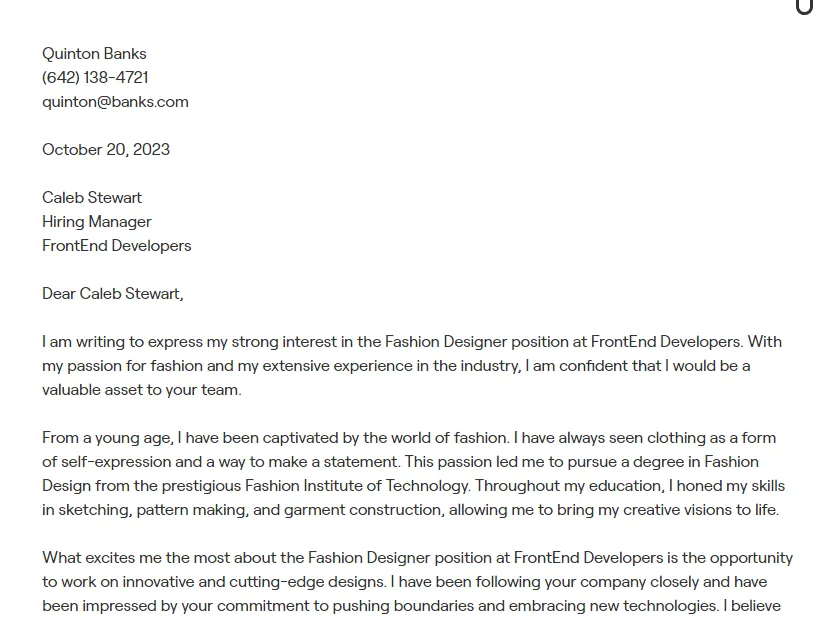Why a Fashion Design Cover Letter Matters
In the competitive world of fashion design, a well-crafted cover letter is your first opportunity to make a lasting impression. It’s more than just a formality; it’s a crucial tool for showcasing your personality, skills, and passion. While your resume provides a snapshot of your experience, the cover letter allows you to tell a story, explaining why you’re the ideal candidate for the role and how your unique talents align with the company’s vision. A compelling cover letter can be the deciding factor in securing an interview, especially when competing with other talented designers. It’s your chance to go beyond the bullet points and demonstrate your understanding of the industry, the specific job requirements, and the company’s brand.
The Importance of a Strong Cover Letter
A strong cover letter demonstrates your communication skills, attention to detail, and genuine interest in the position. It’s an opportunity to highlight your key achievements and tailor your application to the specific requirements of the job. By addressing the hiring manager directly and expressing your enthusiasm, you create a personal connection that a generic application cannot achieve. A well-written cover letter showcases your ability to articulate your value proposition, communicate your design philosophy, and illustrate your understanding of the fashion industry. It allows you to elaborate on your skills and experiences in a way that complements your resume, providing a more complete picture of who you are as a designer and what you can bring to the company. A well-crafted cover letter sets the stage for a successful interview.
Key Elements to Include
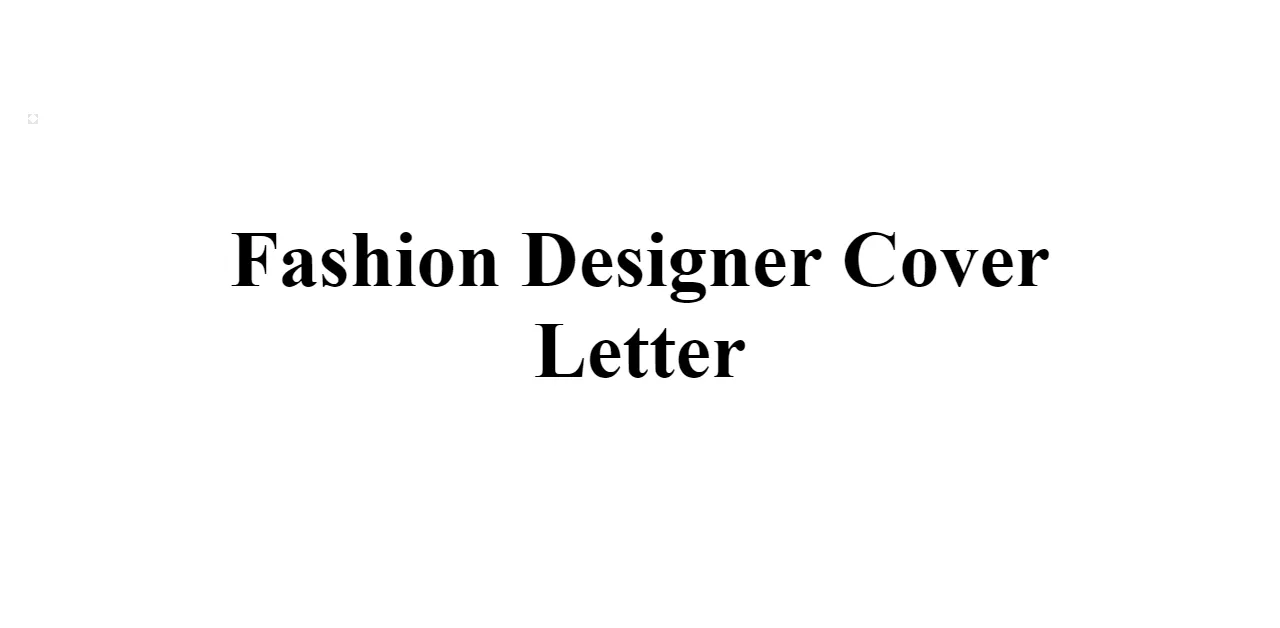
A successful fashion design cover letter includes several essential elements. These components work together to create a comprehensive and compelling introduction of yourself. Begin with your contact information and a professional header. Then, address the hiring manager by name, if possible, to show you’ve taken the time to research the company. Your opening paragraph should immediately capture the reader’s attention, stating your interest in the role and briefly mentioning why you’re a good fit. The body of your letter should highlight your skills, experiences, and achievements, tailoring them to the specific job description. Quantify your accomplishments whenever possible, using numbers and data to illustrate your impact. Finally, express your passion for fashion and the company, and end with a clear call to action, such as requesting an interview.
Your Contact Information and Header
Start your cover letter with a professional header that includes your name, address, phone number, and email address. Ensure your email address is professional. Your header should be neatly organized and easily readable. This information allows the hiring manager to quickly reach out to you if they are interested in your application. Consider using a slightly larger font size for your name to make it stand out. This is the first impression your application makes, so it should be clean and visually appealing. Use a professional-looking font like Arial, Calibri, or Times New Roman for the rest of your letter to maintain consistency and readability. Place this at the top of the page, aligned either to the left or right, depending on your preference.
Addressing the Hiring Manager
Always address the hiring manager by name if possible. This shows that you’ve done your research and are genuinely interested in the position. Look for the hiring manager’s name on the company website, LinkedIn, or the job posting itself. If you can’t find a name, use a professional greeting such as “Dear Hiring Manager” or “Dear [Company Name] Hiring Team.” Personalizing the greeting makes your letter stand out from generic applications and demonstrates attention to detail. It shows you’ve taken the time to find out who will be reading your application, adding a personal touch that can create a positive first impression. Avoid using generic greetings like “To Whom It May Concern”.
The Opening Paragraph
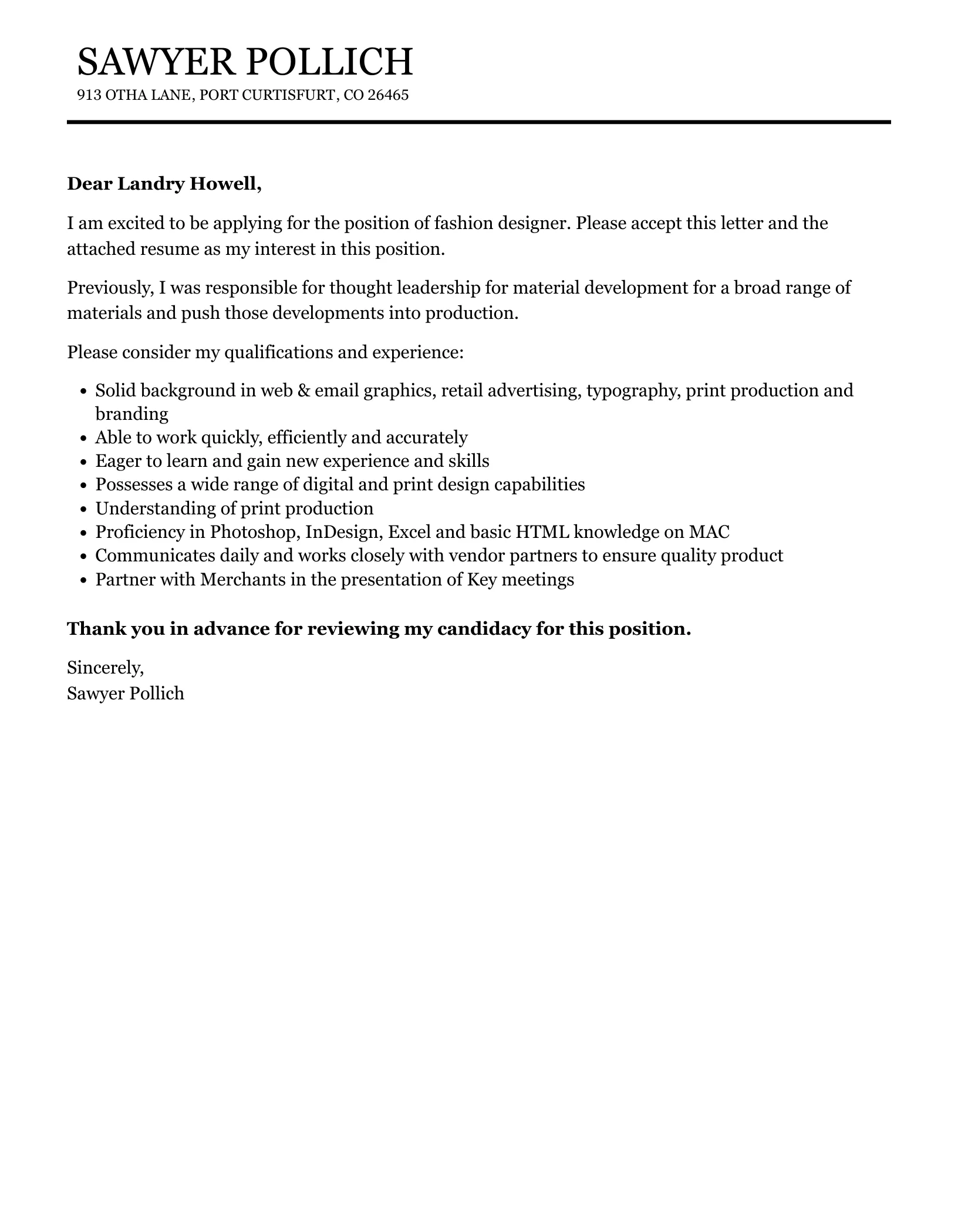
The opening paragraph is your chance to grab the hiring manager’s attention. Start by stating the position you are applying for and where you saw the job posting. Then, briefly express your enthusiasm for the opportunity and mention why you are a strong candidate. Highlight one or two key skills or experiences that align with the job description. Keep it concise and engaging to encourage the reader to continue. Avoid generic phrases and clichés; instead, aim for a compelling opening that showcases your personality and passion for fashion design. Mentioning a specific project or accomplishment in this paragraph can also be effective. Use this section to create intrigue and motivate the reader to learn more about you.
Highlighting Your Skills and Experience
The body of your cover letter should highlight your relevant skills and experiences. Review the job description carefully and tailor your letter to match the requirements. Provide specific examples of how you have used your skills to achieve success in previous roles. Focus on the skills and experiences that are most relevant to the position. Use action verbs to describe your accomplishments and avoid simply listing responsibilities. Instead, show how you utilized your skills to solve problems, improve processes, or create innovative designs. Demonstrate your understanding of the fashion industry by referencing current trends, design principles, or specific techniques that are applicable to the role. Include examples of your work and how they match the needs of the company.
Tailoring Your Letter to the Job
Customizing your cover letter for each job application is crucial. Generic cover letters are easily identifiable and often overlooked. To tailor your letter, carefully review the job description and identify the key requirements and keywords. Use these keywords throughout your letter to demonstrate that you possess the necessary skills and experience. Research the company and understand their brand, values, and target audience. Show how your design philosophy and experience align with the company’s mission and vision. Tailoring your letter shows that you are genuinely interested in the specific opportunity and have taken the time to understand the company’s needs. Consider including examples of how you have tackled similar design challenges or contributed to similar brands in the past. This targeted approach substantially increases your chances of getting noticed.
Quantifying Your Achievements
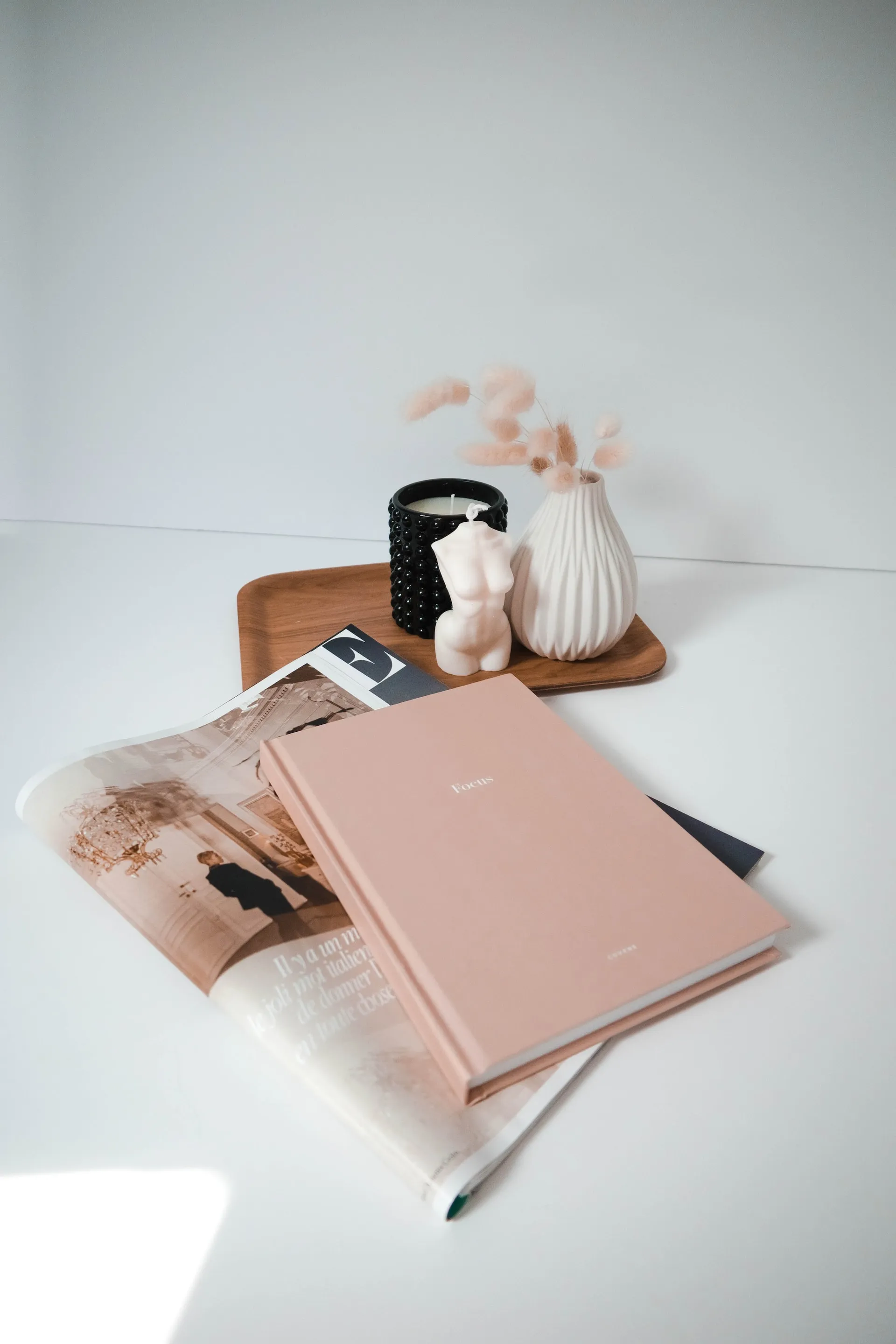
Whenever possible, quantify your achievements to provide concrete evidence of your success. Instead of saying you “improved sales,” state that you “increased sales by 15%” through specific design initiatives. Use numbers, data, and metrics to illustrate the impact of your work. This demonstrates your ability to deliver results and adds credibility to your claims. Consider using percentages, dollar amounts, or other quantifiable metrics to showcase your accomplishments. If you designed a successful collection, mention the number of units sold or the revenue generated. If you streamlined a design process, quantify the time or resources saved. Quantifying your achievements helps hiring managers understand the value you can bring to their company. The more specifics you provide, the more impressive your application will be. This is your opportunity to show your impact in a clear and concise manner.
Showcasing Your Passion and Personality
Let your passion for fashion design shine through. Share what inspires you and what excites you about the industry. Express your enthusiasm for the company’s brand and design aesthetic. Your cover letter is a chance to let your personality show, making you more memorable to the hiring manager. Talk about your design philosophy, your favorite designers, or your understanding of current trends. Show that you have a genuine interest in the company’s products or services. A genuine passion can create a memorable connection and make you stand out from other applicants. Make sure the tone of your letter aligns with the company’s brand and culture. Demonstrating your personality helps the hiring manager envision you as a part of the team.
The Closing Paragraph and Call to Action
Conclude your cover letter with a strong closing paragraph that summarizes your interest in the role and reiterates your key qualifications. Thank the hiring manager for their time and consideration. End with a clear call to action, such as requesting an interview or expressing your eagerness to discuss your qualifications further. Make it easy for the hiring manager to take the next step. Ensure your closing is professional and enthusiastic, leaving a positive final impression. Provide your contact information again to make it easy for the hiring manager to reach you. Proofread your letter carefully to avoid any typos or grammatical errors that could undermine your professionalism. A well-crafted closing is essential for a successful application. Your call to action encourages them to contact you.
Fashion Design Cover Letter Examples
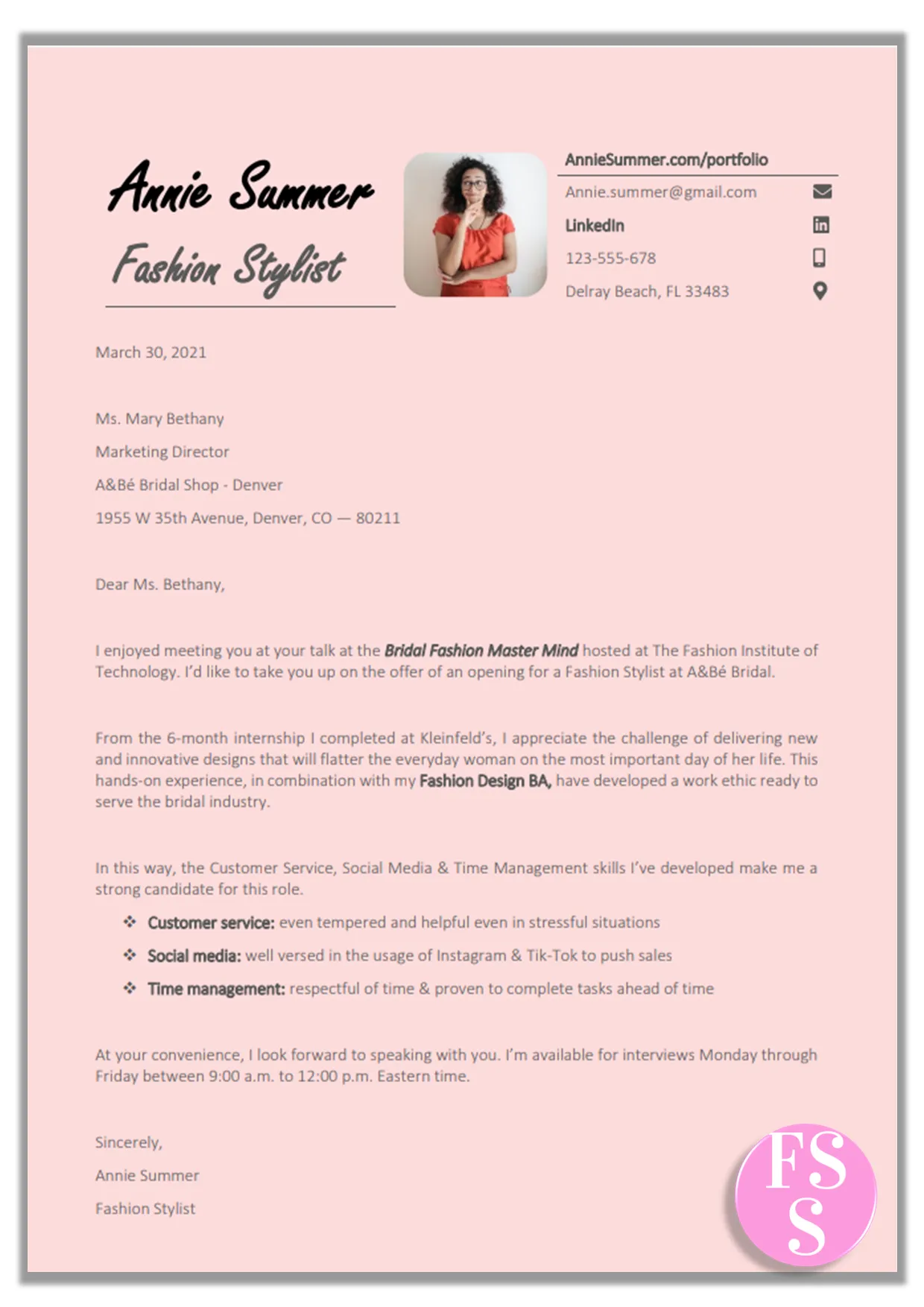
Here are examples of cover letters tailored for different fashion design roles. Each example focuses on key aspects of the role and highlights relevant skills and achievements. These examples are designed to give you a starting point to customize your own cover letter, ensuring that it aligns with your experience and the requirements of the job you’re applying for. Remember to adapt the examples to reflect your unique experiences and qualifications. Make sure you adjust these examples to reflect your individual background and the specific job requirements, making your application stand out. This gives you a clear path to use these examples as a template. The examples below showcase how to tailor your letter to different roles.
Example 1: Entry-Level Fashion Designer
For an entry-level position, focus on your education, relevant coursework, internships, and any personal design projects. Show your passion for fashion and your eagerness to learn and contribute. Highlight any technical skills, such as proficiency in design software. If you don’t have a lot of professional experience, emphasize your potential, creativity, and willingness to work hard. Show your understanding of the fashion industry and current trends. Mention specific projects that demonstrate your skills, such as a portfolio of sketches or a collection you designed. Tailor your letter to the specific requirements of the job, highlighting how your skills and passion align with the company’s needs. Demonstrate your commitment to detail and a strong work ethic. This is your opportunity to showcase why you are a great starting point for the company.
Key Skills Highlighted
- Strong foundation in fashion design principles
- Proficiency in design software (e.g., Adobe Illustrator, Photoshop)
- Excellent sketching and illustration skills
- Understanding of garment construction and pattern making
- Knowledge of fabrics and textiles
- Strong communication and teamwork skills
- Ability to adapt and learn quickly
Example 2: Experienced Fashion Designer
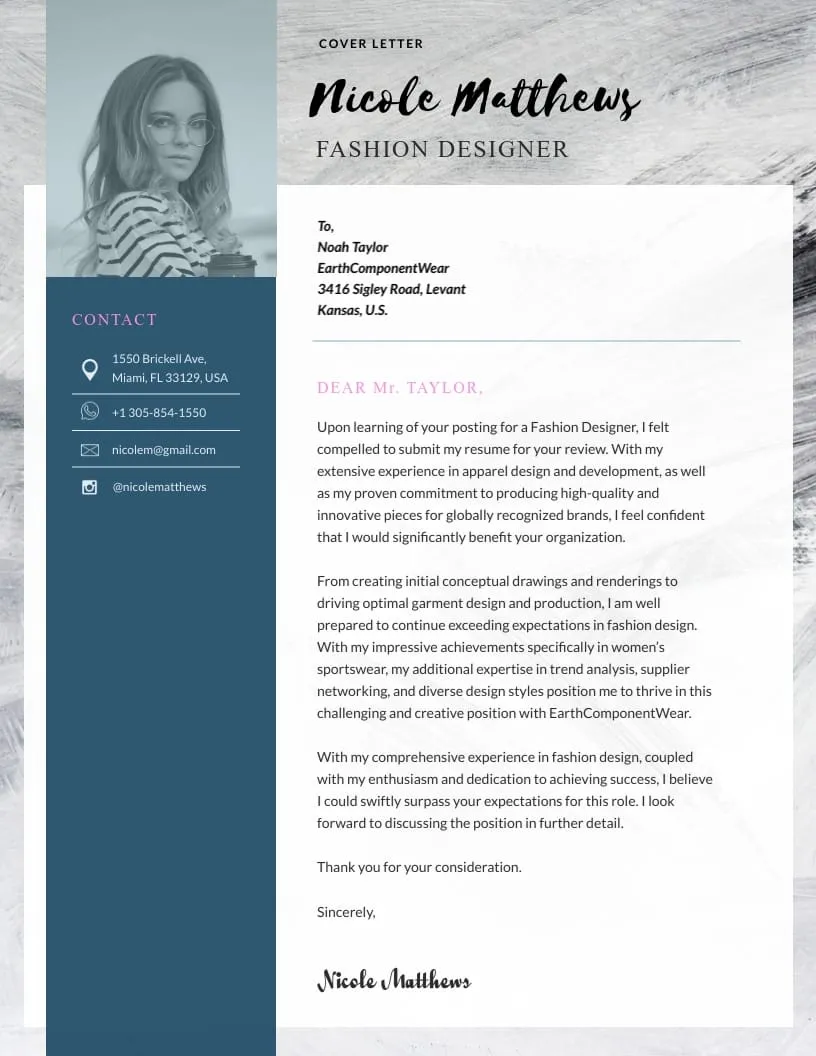
An experienced designer should highlight their professional achievements, leadership roles, and specific contributions to past projects. Quantify your results with data to demonstrate your impact. Provide details about successful collections, increases in sales, or improvements in design processes. Showcase your ability to manage teams, mentor junior designers, and collaborate with cross-functional teams. Tailor the letter to the specific job description, focusing on how your experience aligns with the role’s responsibilities and expectations. Demonstrate your ability to lead, innovate, and achieve strategic goals. Mention any awards, recognitions, or industry accolades. Show that you’ve established yourself in the industry and can bring significant value to the company.
Emphasizing Professional Accomplishments
- Successfully launched multiple collections, resulting in a 20% increase in sales
- Led a design team of 5 designers, resulting in cohesive and innovative designs
- Improved the design process, reducing production time by 15%
- Collaborated with marketing and sales teams to increase brand awareness
- Mentored junior designers, fostering their professional growth
Example 3: Fashion Design Intern
When applying for an internship, express your enthusiasm for the opportunity to learn and gain experience. Highlight your coursework, relevant projects, and any previous internships or volunteer work. Showcase your skills and potential, emphasizing your eagerness to contribute to the team. Tailor your letter to the specific internship requirements, demonstrating your understanding of the company’s brand and the responsibilities of the role. Highlight any relevant skills like design software. Focus on your passion for fashion and your commitment to professional development. Express your eagerness to learn from experienced designers and to contribute to the company’s success. Mention your willingness to take on new challenges and your dedication to producing high-quality work. This is your chance to show your interest in the fashion design industry.
Focusing on Learning and Enthusiasm
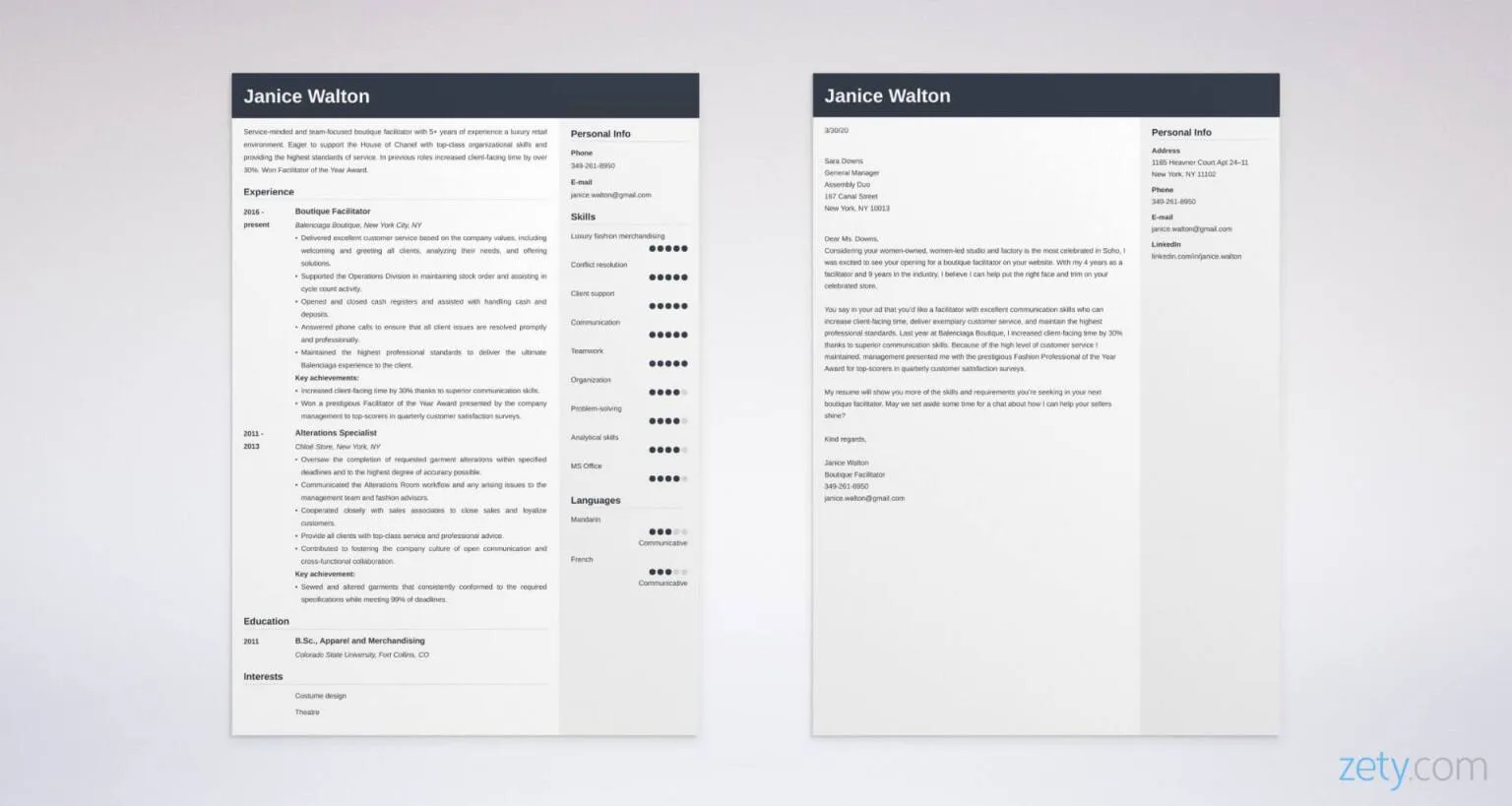
- Eager to learn from experienced designers and industry professionals
- Proficient in fashion design software and sketching
- Strong understanding of fashion trends and design principles
- Excellent communication and teamwork skills
- Dedicated to producing high-quality work and meeting deadlines
Example 4: Freelance Fashion Designer
For a freelance position, highlight your experience working with various clients and managing projects independently. Showcase your ability to handle multiple projects simultaneously and meet tight deadlines. Emphasize your communication skills and your ability to understand and fulfill clients’ needs. Provide examples of successful projects and the results you achieved. Demonstrate your ability to manage your own time and maintain a professional work ethic. Tailor your letter to the specific project requirements, highlighting your relevant skills and experience. Include any specific design services you offer and your fee structure. Mention your ability to be flexible, adaptable and communicate effectively with clients. Showcase any successful freelance projects you have worked on previously.
Demonstrating Project Management
- Managed multiple projects simultaneously, meeting all deadlines and budgets
- Developed strong client relationships, resulting in repeat business
- Created innovative designs that met clients’ specific needs
- Proficient in design software and garment construction techniques
- Managed all aspects of the design process, from concept to production
Example 5: Fashion Design Manager

As a Fashion Design Manager, showcase your leadership and management skills. Highlight your ability to lead and motivate a design team, manage budgets, and ensure projects are completed on time and within budget. Provide examples of successful team projects, design innovations, and improvements in the design process. Emphasize your understanding of the fashion industry, market trends, and consumer behavior. Tailor your letter to the specific management requirements of the role, demonstrating your experience in strategic planning, project management, and team leadership. Highlight your experience in leading design teams and achieving business goals. Show that you possess the ability to drive innovation and deliver results.
Showcasing Leadership and Management Skills
- Led and motivated a design team of 10 designers, resulting in cohesive collections
- Managed budgets and ensured projects were completed on time and within budget
- Developed and implemented design strategies to meet business objectives
- Improved the design process, reducing production costs by 10%
- Collaborated with marketing and sales teams to increase brand awareness
Tips for Writing a Winning Cover Letter
Several tips can help you create a winning fashion design cover letter. These strategies will guide you towards crafting a letter that impresses hiring managers and significantly increases your chances of success. Proofread your letter carefully to ensure it is free of errors. Use a professional tone and avoid slang or overly casual language. Keep your letter concise and focused, highlighting only the most relevant information. Tailor your letter to each job and emphasize how your skills and experience align with the specific requirements of the position. Ensure your letter stands out and accurately represents your skills. Remember to keep a professional style.
Researching the Company
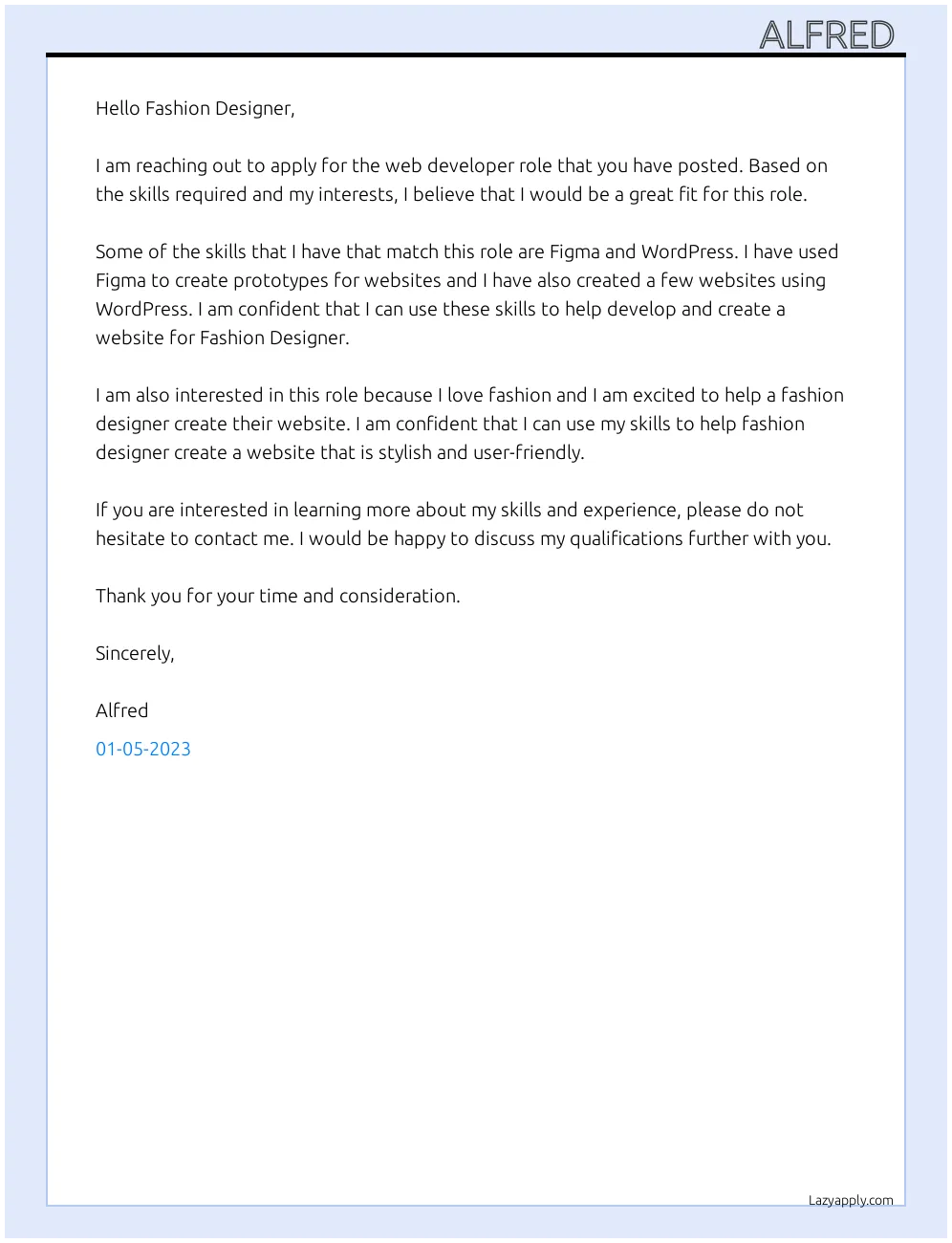
Before writing your cover letter, thoroughly research the company and the role. Visit the company website, read their mission statement, and review their recent collections to understand their brand and design aesthetic. Understand the company’s values, culture, and target audience. This will help you tailor your letter to their specific needs and demonstrate your genuine interest in the position. Look for the hiring manager’s name, if possible, and address your letter to them directly. Use this knowledge to highlight how your skills and experience align with their brand. If you understand the company you will be able to tailor a letter specifically for their needs.
Proofreading and Editing
Proofread your cover letter carefully to eliminate any typos, grammatical errors, or inconsistencies. A poorly written letter can undermine your credibility, even if you have impressive skills and experience. Check for spelling and grammar errors, and ensure your letter is clear, concise, and easy to read. Consider having a friend or career counselor review your letter for feedback. Errors can affect your chances of being hired. A polished letter shows that you pay attention to detail. Correcting errors helps ensure that you are being considered and can perform the job.
Using Action Verbs
Use strong action verbs to describe your skills and accomplishments. Action verbs create a dynamic and engaging narrative. Start sentences with verbs that convey your actions and achievements. This helps bring your experience to life. Instead of simply listing your responsibilities, showcase what you accomplished. For example, instead of “responsible for designing collections,” write “designed and launched three successful collections.” These verbs make your accomplishments more memorable and provide a better idea of your contributions. Action verbs make it much easier to understand your value. Use action verbs when highlighting your skills and experience.
Formatting Your Cover Letter
Format your cover letter to be visually appealing and easy to read. Use a professional font, such as Arial, Calibri, or Times New Roman, in a readable size (11 or 12 points). Keep the letter concise, ideally one page in length. Use clear headings, bullet points, and sufficient white space to break up text. Ensure the layout is clean and organized. A well-formatted letter shows attention to detail and respect for the reader’s time. A clean format will help the reader easily scan through the letter and quickly grasp its main points. This will ensure that the hiring manager can see your important details at a glance. Proper formatting demonstrates professionalism and enhances readability. Maintain a professional tone throughout your letter.
Where to Find Fashion Design Job Openings
To find fashion design job openings, explore various online and offline resources. These locations help you in your job search process. Utilize online job boards, company websites, and networking events to identify opportunities. This multi-faceted approach increases your chances of securing your dream job. Stay informed on the industry.
Online Job Boards
Online job boards are great sources of job listings for fashion design positions. Popular platforms such as Indeed, LinkedIn, Glassdoor, and specialized fashion job boards are key resources. Search for jobs using keywords such as “fashion designer,” “pattern maker,” or “textile designer.” Set up job alerts to receive notifications about new openings. Regularly check these boards for new postings and update your profile to get noticed by recruiters. Online job boards are valuable tools for finding the right job.
Company Websites
Check the career sections of fashion companies’ websites. Many companies post job openings directly on their sites. This can provide access to positions that aren’t advertised elsewhere. Research companies you are interested in and visit their careers pages. Explore the “Careers” or “Join Our Team” sections. This allows you to apply directly through the company. Submitting your cover letter directly can increase your chances.
Networking and Industry Events
Networking and attending industry events, such as fashion shows, trade shows, and design conferences, are essential for finding job openings. Connect with industry professionals on LinkedIn and build your network. Attend events to meet potential employers and learn about unadvertised job opportunities. Networking can connect you with job openings. Networking allows you to make connections and learn from industry experts. Networking is helpful when trying to obtain a job in the fashion industry.
Conclusion
A well-crafted cover letter is a crucial component of your fashion design job application. By highlighting your skills, experience, and passion, you can make a strong impression on hiring managers and increase your chances of landing an interview. Tailor your cover letter to each job, and always proofread for errors. Take the time to showcase your unique talents and demonstrate why you are the ideal candidate for the role. Use the examples provided as a guide and modify them to match your individual skills. Remember, a compelling cover letter is not just a formality; it’s your opportunity to make a memorable first impression and begin your fashion design career. With these tips, you can create a cover letter that sets you apart and helps you achieve your professional goals in the fashion industry. Good luck!
